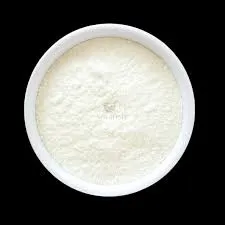
জুলাই . 27, 2024 11:02 Back to list
Exploring the Impact of Hydroxyethyl Cellulose Concentration on Viscosity Characteristics and Applications
Understanding Hydroxyethyl Cellulose Viscosity Properties and Applications
Hydroxyethyl cellulose (HEC) is a water-soluble polymer derived from cellulose, widely used in various industries due to its remarkable thickening, gelling, and stabilizing properties. One of the key characteristics of HEC is its viscosity, which plays a crucial role in determining its applications across different sectors, including pharmaceuticals, cosmetics, food, and construction.
What is Viscosity?
Viscosity is a measure of a fluid's resistance to flow. In simple terms, it describes how thick or thin a liquid is. For HEC, viscosity is not merely a physical property; it significantly affects how the substance behaves when mixed with liquids or other components. The viscosity of HEC solutions can be influenced by several factors, including concentration, temperature, and the shear rate at which the substance is stirred or forced through an apparatus.
Factors Influencing HEC Viscosity
1. Concentration The concentration of HEC in a solution is perhaps the most significant factor affecting viscosity. Higher concentrations generally lead to increased viscosity due to more polymer chains interacting with one another and the solvent. In formulations, achieving the right concentration is essential to develop the desired texture and stability.
2. Temperature Temperature can dramatically affect the viscosity of HEC solutions. As temperature increases, viscosity typically decreases. This is attributed to the increased molecular motion that allows polymer chains to move more freely, thus reducing resistance. In practical applications, formulators must consider these temperature-related changes, especially in manufacturing and application environments.
3. Shear Rate The viscosity of HEC can also vary with different shear rates. When a solution is subjected to high shear forces (such as during mixing or pumping), its viscosity may decrease—a phenomenon known as shear-thinning. This property is particularly advantageous in industries such as paints and coatings, where easy application is necessary.
hydroxyethyl cellulose viscosity

Applications of HEC Based on Viscosity
1. Pharmaceuticals In the pharmaceutical industry, HEC is utilized as a thickener, stabilizer, and film-forming agent. It enhances the viscosity of liquid formulations, leading to improved stability and sustained release of active ingredients. The control of viscosity is paramount to ensure proper delivery systems in oral and topical medications.
2. Cosmetics HEC is widely used in cosmetics and personal care products such as creams, lotions, and gels. Its ability to bind water and form a gel-like consistency allows for the creation of smooth and spreadable formulations. The desired viscosity in cosmetic products not only improves user experience but also influences skin feel and performance.
3. Food Industry In food processing, HEC serves as a thickening agent and stabilizer in various products such as sauces, dressings, and desserts. The viscosity of HEC in food applications enhances mouthfeel and prevents ingredient separation, ensuring product consistency and quality.
4. Construction HEC is also applied in the construction industry, particularly in cement and tile adhesives. Its thickening properties help improve the application, adhesion, and workability of construction materials. By adjusting the viscosity, manufacturers can create products that meet specific performance criteria required in construction applications.
Conclusion
In summary, the viscosity of hydroxyethyl cellulose is not just a numerical value; it embodies essential properties that dictate its usability across diverse industries. By manipulating factors such as concentration, temperature, and shear rate, formulators can tailor HEC solutions to meet specific requirements, enhancing product performance and user satisfaction. As industries evolve and innovate, the significance of HEC's viscosity in formulations will continue to be a vital area of research and development.
-
The Widespread Application of Redispersible Powder in Construction and Building Materials
NewsMay.16,2025
-
The Widespread Application of Hpmc in the Detergent Industry
NewsMay.16,2025
-
The Main Applications of Hydroxyethyl Cellulose in Paints and Coatings
NewsMay.16,2025
-
Mortar Bonding Agent: the Key to Enhancing the Adhesion Between New and Old Mortar Layers and Between Mortar and Different Substrates
NewsMay.16,2025
-
HPMC: Application as a thickener and excipient
NewsMay.16,2025
-
Hec Cellulose Cellulose: Multi functional dispersants and high-efficiency thickeners
NewsMay.16,2025







